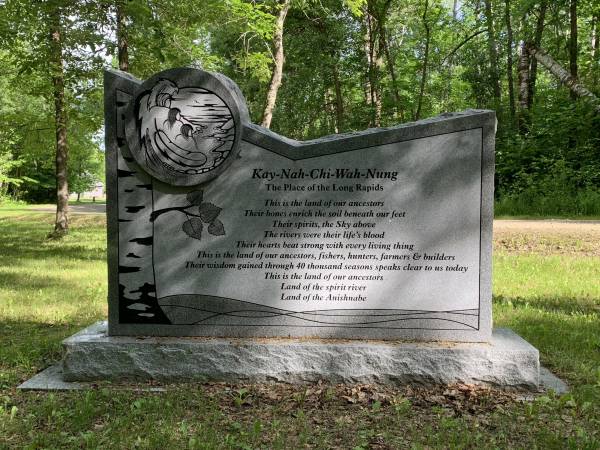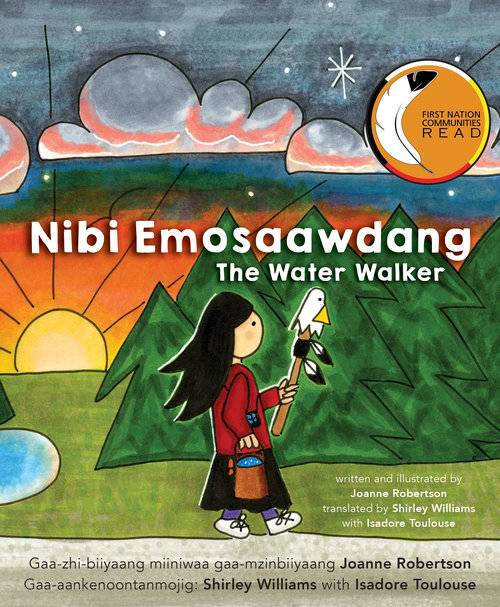The Treaty Teachings Project: Treaty 3 and Treaty Relationships in Canada
By Teagan de Laronde and Krista Barclay,
Informed by conversations with Giitaagiizhig Art Hunter and Professor Pamela Klassen
Treaty Teachings is a two-year project that is funded by the Connaught Community Partnership Research Program and is focused on telling, teaching and displaying the history of Treaty 3. This work builds from Professor Pamela Klassen’s Kiinawin Kawindomowin Story Nations project and long-term collaboration with Kay-Nah-Chi-Wah-Nung Historical Centre and will result in a digital storytelling portal and online teaching materials.
Treaty 3 was an agreement to share the land finalized in 1873 between Anishinaabe leaders from the area around Lake of the Woods (what is now northwestern Ontario and eastern Manitoba) and the Crown. Treaties were negotiated ‘in the honour of the Crown’ on behalf of future settlers to this place. Though Indigenous nations negotiated treaties in a spirit of reciprocity and respect to establish ongoing relationships, settlers and their governments have not acted honourably in these relationships.
During the First World War the Canadian government expropriated Treaty 3 reserve lands and forced the amalgamation of seven distinct Anishinaabe communities to make land available to settlers. The amalgamated communities, which came to be known as Rainy River First Nations, advocated for decades for restitution and the restoration of their reserves, including the site where Kay-Nah-Chi-Wah-Nung Historical Centre now stands. Kay-Nah-Chi-Wah-Nung (the place of the long rapids) is a site of historical, cultural, and archaeological significance. It is home to ancient burial mounds along Manidoo Ziibi (the Rainy River) and was the centre of a continent-wide trading network where people gathered to trade, celebrate, and mourn for thousands of years. You can learn more about this amazing place by watching Ryan McMahon’s new Stories from the Land documentary on CBC, by following Kay-Nah-Chi-Wah-Nung on Twitter, or by adding them to your post-pandemic road trip itinerary.
Today, Kay-Nah-Chi-Wah-Nung Historical Centre is one of only a handful of Indigenous-run curatorial centres in Ontario. With Giitaagiizhig Art Hunter, a Rainy River First Nations community historian at Kay-Nah-Chi-Wah-Nung, Professor Pamela Klassen, Dr. Krista Barclay and undergraduate and graduate student members of the Treaty Teachings team at UofT have been working on historical research to support community oral history projects and the Treaty Teachings storytelling portal and educational resources.
Youth Workshops:
With support from the Ministry of Colleges and Universities and the Treaty Teachings project, youth coordinator Teagan de Laronde organized the first in a series of treaty workshops for Indigenous and non-Indigenous youth on June 9th to discuss the relationships Indigenous peoples and Canadians have with the land and each other, and how these relationships have been represented in and by Treaty. This discussion was led by Métis Nation of Ontario Councillor and community-based historian Mitch Case and author and illustrator Joanne Robertson (Atikameksheng Anishnawbek), and involved an open public session and a follow-up sharing circle for Indigenous youth.
These workshops welcome the idea that we all have a role in reflecting on and maintaining treaty relationships. With that in mind, we offer our own reflections here. Content warning: these reflections mention Residential Schools.
Teagan’s Reflection:
I am Métis and a member of Red Sky Metis Independent Nation. While Indigenous, I recognize that I am a guest of the land I am living on. It is because of treaties that I am able to live and exist on these lands. Creating relationships was the precursor to treaties that established the good faith among Indigenous Nations that the treaties they signed would be prosperous. The process of entering into treaties had always existed in Indigenous legal traditions. When settlers entered into these agreements, they did so in a tradition unlike their own.
I was grateful to have the ability to host a Treaty Teachings workshop facilitated by such educated and experienced people. Coming out of the workshop conversations, I did a lot of reflecting about the difficulty of having hard conversations surrounding the reality of Treaty relationships in Canada. We always hear about the 'Spirit and Intent' of Treaty, but that spirit of a fair relationship exists solely in historical senses. The continuous misactions of the Canadian Government and the Crown makes us question whether these treaties were ever intended to be lived up to at all. I find that trying to negotiate "what it should be" versus "what it is" is incredibly upsetting. Indigenous nations have continued to pursue and uphold the relationships they entered into with the Crown, whereas the Crown has failed on multiple accounts.
It’s hard not to think of the news from Residential Schools across Canada as adding to the lists of failures that Indigenous peoples have experienced from a government they are supposedly in a just relationship with. As informed by our workshop sharing circle, Indigenous youth are mad. We are angry. It's hard not to consider the unfair expectation that exists in dealing with the burden of trauma and readily offering forgiveness. It is a false expectation for Indigenous peoples to simply move on. We demand justice and need to move forward in a way that is informed by Indigenous peoples’ voices and perspectives.
Krista’s Reflection:
I am a settler in Williams Treaties Territory near the shores of Lake Simcoe. My ancestors came here as impoverished crofters and industrial labourers. Acknowledging that they (and I) benefitted from the dispossession of Indigenous peoples does not negate the challenges they overcame to make lives here. What it does do, is acknowledge that the Dominion of Canada was created to benefit people like my ancestors, and people like me, to help us succeed at the expense of Indigenous peoples. This month there has been increased public attention on a horrifying fact that Indigenous families and communities have known all along: that Indigenous children are buried in mass graves at Residential School sites that operated across Canada from the 1870s to 1996. For settlers, the time for shock or disbelief is long gone and the time for action is long past due. We need to educate ourselves and others without expecting labour or emotional effort from Indigenous peoples.
As settlers in a colonial system designed to our advantage, we must demand that our elected representatives live up to the original promise and intent of the treaties signed on our behalf by acting meaningfully and decisively to repair treaty relationships and create a more equitable society. The Truth and Reconciliation Commission’s 94 Calls to Action were issued five years ago as a starting place on the road to reconciliation. Since then, the federal government has spent millions challenging First Nations in court and appealing Canadian Human Rights Tribunal rulings. Six months ago, the Yellowhead Institute determined that Canada has addressed only eight of the 94 Calls to Action. There must be space for anger and frustration and grief. There must be truth, learning, redress, and restitution before there can be reconciliation. Most of all, there must be action.
……
Please contact us if you would like to be added to the mailing list for future Treaty Teachings workshops and the launch of the Treaty Teachings website.
Teagan de Laronde is Metis from Red Sky Metis Independent Nation. She is currently enrolled the at the University of Toronto specializing in Indigenous Studies and minoring in Political Science and Religion.
Giitaagiizhig Art Hunter is a Rainy River First Nations Knowledge Keeper and community historian at Kay-Nah-Chi-Wah-Nung Historical Centre.
Krista Barclay is a settler historian and Postdoctoral Fellow who teaches courses focused on commemoration and Indigenous-settler relations in the Canadian Studies program at University College.
Pamela Klassen is Chair and Professor in the Department for the Study of Religion and the Principal Investigator for the Treaty Teachings project.

